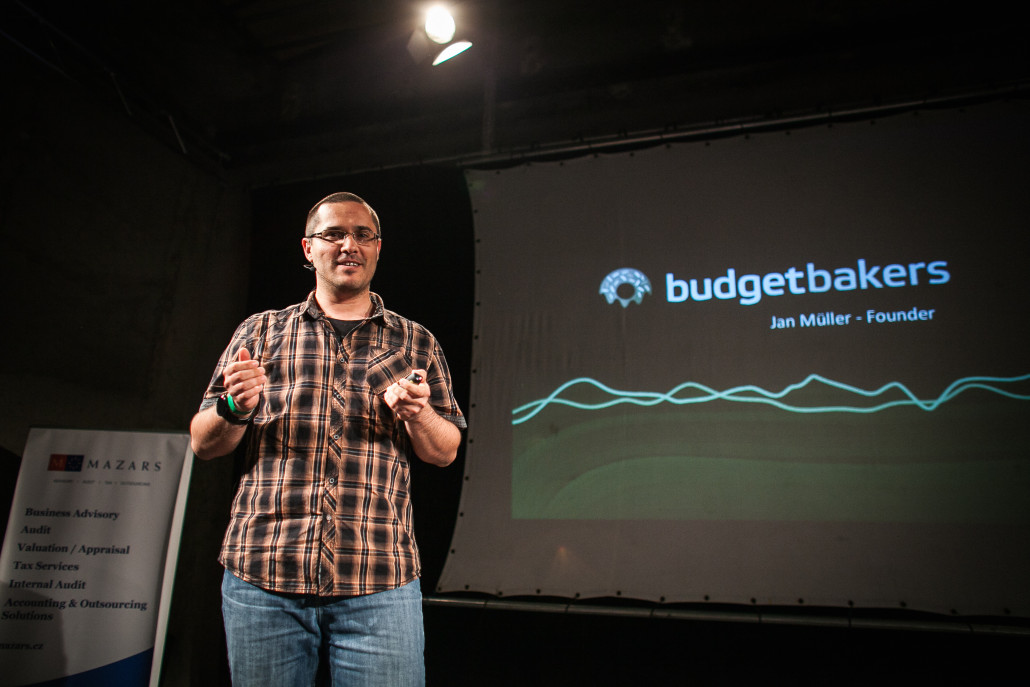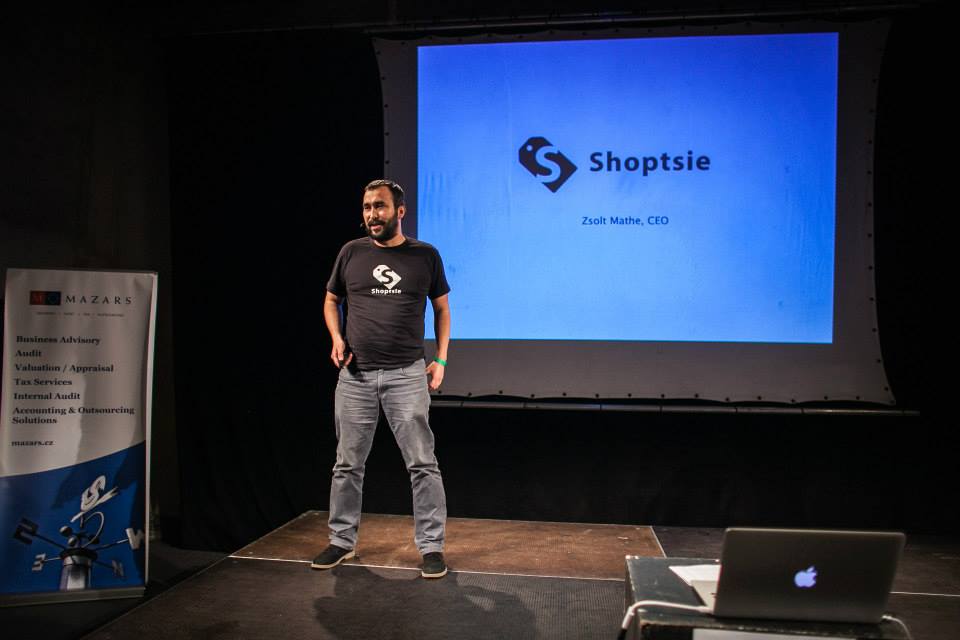9 Ways to Make Pitching Easier On Yourself
For some who join us at StartupYard, pitching before an audience of 300 is as natural as brushing their teeth. Some people do have a knack for public speaking that can’t exactly be explained. Others have to work at it. This post is for those people- the majority of us, to whom pitching and selling our ideas in front of a bunch of people feels about as unnatural as reciting Shakespeare.
Don’t Overestimate the Role of Talent
Certain people are naturally good speakers. But most great speakers have to work at it. The chances are that if you hear someone who’s great at public speaking, that ability is the result of many years of practice.
On the flip side, many people with genuine talent are unwilling to put the work in, and really use their talents to full effect. I don’t worry about the worst speakers we have at StartupYard- I worry about the talented ones. Those are the ones most likely to slack when it comes to preparing their pitches and really putting in the work. They are used to coasting on their natural abilities, and they often under-prepare for the overwhelming experience of pitching to a big audience.
When the real talents put in the work, we have magical moments. But more often, the best pitches come from the entrepreneurs who thought they couldn’t even do the pitch.
Be the Biggest, Loudest Person in the Room
This also has to do with natural inclination, but also experience. As a result of meeting so many people in the technology field, I’ve come to be able to spot certain things about people that I couldn’t before. For example, Jan Mayer, Founder and CEO of 2015’s TrendLucid, is a lecturer at Masaryk University. When we first met, and when he pitched StartupYard at our final selection rounds last year, I asked him if he was a teacher.
“How did you know that?” he asked, surprised. It was his ability to project his voice, as I like to say, to about 130% of the available space, and to appear larger than the space he occupied. If you watch teachers teaching, they command attention by speaking in a voice which is slightly louder than it needs to be, and addressed to what seems to be a group which is slightly larger than the actual group they are speaking to.
This “4/3s” voice allows the teacher to command the attention of the audience (often unruly teenagers), in a way that a normal speaking voice could not. By giving the appearance of size and energy that is slightly larger than the room, the teacher makes the audience feel as if they are smaller than they truly are.
So be big. Be bigger than the room.
Don’t Pitch or Present. Explain and Share
There is a positive example that you can take from Steve Jobs, and more recently Jony Ive or Tim Cook. The best “pitches,” are really not a sales pitch, but a narrative of events, trends, and technologies that explains why a product is the way it is, and why that makes sense.
In best pitches I hear, the emphasis is not on the fact that something can be done cheaper, or that money can be saved or earned- nor do they lay heavy emphasis on the size of the market (a classic rookie mistake is claiming you’re in a “Gazillion Dollar Industry,” as if that means something).
Pitches that tell me a company will be hugely profitable are at best eye-rollers. If you’re a startup, then that’s not a claim anybody should put much faith in. And anyway, the most important thing is the reason your new idea or business model is revolutionary, not exactly how much money it’s going to make. Those predictions will be useless in 6 months. So focus on what you can control, which is the execution of your vision.
Instead, the best pitches tell a story, which is something we work on at StartupYard quite intensively. The story is shared, and the processes involved are explained. If you approach your pitch with this perspective in mind, then you can relieve yourself of much of the burden that many entrepreneurs place on themselves of “selling,” with something much more organic- something that they do every day with employees, friends and family.
Investors and partners want to see that you can clearly explain and share your vision, so make your pitch about that- not about your ability to sell. This is in many ways easier, because it demands that you stick to your strengths, rather than
Remember, then Talk. Not the Other Way Around
When we’re engaged in normal conversation, sometimes we start a sentence without really being sure where it’s going to end.
Here’s a fascinating exercise- record yourself talking about something casually, and then write it down exactly as you spoke it aloud. What you’ll find, typically, is that it makes almost no sense at all. It will be full of runon sentences that lead nowhere, and ad-hoc phrases that only make grammatical sense if you cross your eyes.
Nobody talks the way they write. But often, founders doing their first pitch will write it, expecting themselves to be able to say it out loud. Well, your mouth and your brain are not accustomed to actually speaking the language that we recognize in writing. That’s just not the way people talk.
Find Your “Beats”
When working with our startups, I constantly harp on the idea of “beats,” in their pitches. A beat is a moment of particular emphasis. It is a phrase or a word, or a particular idea that is central to your narrative. It needs to be remembered.
Great pitches have a clear sequence of important points, or beats, which are memorable. For an example of this, it’s useful to look at someone like Tim Cook, revealing the Apple Watch (go to exactly 1:00:00 in the video.
Cook organizes his beats in a very simple pattern. When he needs to emphasize a point, he says it as a slide appears with the same words and an image behind him. Simple, and elegant. If you’ll notice, he only uses words on the screen when he is making a specific, memorable point. At no other time are there any words on screen.
A common mistake for founders is to make their “big point,” or “ahah moment,” a part of a slide that is so complex and full of information, that the audience is busy looking at it instead of listening to what is said. Your “beats,” have to be moments where nothing else gets the attention but one simple idea.
So Nice, You Said it Twice
I’ve talked in previous posts about repeating the name of your company during your pitch (by the way, repeat the name of your company in your pitch). But this piece of advice is simpler. If something is really important in your pitch, don’t be afraid to repeat it.
Repetition is a powerful way to emphasize what is being said. A very powerful way.
You see? People frequently repeat things when they’re speaking, but they rarely do so in writing- which can make a pitch feel pretty stilted when you haven’t rehearsed it enough.
Your Slides Are the Plan, Not the Pitch
Our Managing Director Cedric Maloux repeats this same piece of advice to every startup we accelerate: “Your slides are cues, not content.” When we write our presentations, the tendency is to try and accomplish communication with slides that can’t be done verbally. That’s a mistake, because it leads founders most often to try and pack slides with too much information.
Here’s a good general principle: if you can’t say it 10 words, it’s too much information for a slide. Your slides should be nothing more than a framework for what you want to say. Nobody wants to go to a pitch and spend their time reading your slides. They want to hear from you.
German Field Marshal Helmuth von Moltke famously wrote: “no plan survives contact with the enemy.” As I’ve pointed out, one of the downsides of planning a pitch, is that what you end up with is a plan. Whether that’s a plan of exactly what you’ll say, or exactly what you’ll show the audience, that plan is not what is going to happen.
As I often tell my startups, the trick is not to say what you want, but to avoid saying what you don’t want. So be clear, be precise, and don’t over-write your pitch. Organize it into simple chunks.
Use Real Numbers
When I say “real numbers,” I’m going a bit beyond the “big numbers on the screen,” sense of the word “real.” I see plenty of pitches that are full of impressive numbers that, when you actually consider them, don’t say anything about the startup that’s actually pitching.
Worse, I often see pitches that include the numbers of competitors- as if the startup is just going to magically carve out a slice of the pie in their industry just because they showed up at the table. It doesn’t work that way, and investors know that. Even worse than that, I have heard pitches that included the valuation of companies in the same market. Now we’re in La La Land for sure.
Do Vocal Exercises
It’s silly. It’s embarrassing. It really, really works. For the past 2 years, StartupYard has engaged coaches leading up to Demo Day to work on voice training. The impact, over and over, has been startling- and not just for those founders who began as novices in public speaking.
Your voice is like anything else- an instrument of coordination that you use to do certain things. We are all accustomed to talking. But like the difference between walking a kilometer, and doing a pole vault, the body is not accustomed to the feats of energy and strength that we do not practice long and hard.
For those without extensive practice and training, public speaking is surprisingly exhausting. It takes an unexpected amount of strength to use your voice to address more than a handful of people, and adrenaline causes your heart to beat faster and consume more oxygen, meaning you need to breath more deeply and quickly. This all causes a person to expend more energy, to sweat, to be out of breath, and to feel exhausted, even after only a few minutes.
Bonus: Don’t Forget to Smile
This isn’t part of my 9 tips, but it’s important. Smile! And you’ll get smiles back. That’s reassuring, and will make you feel better about what you’re doing.








